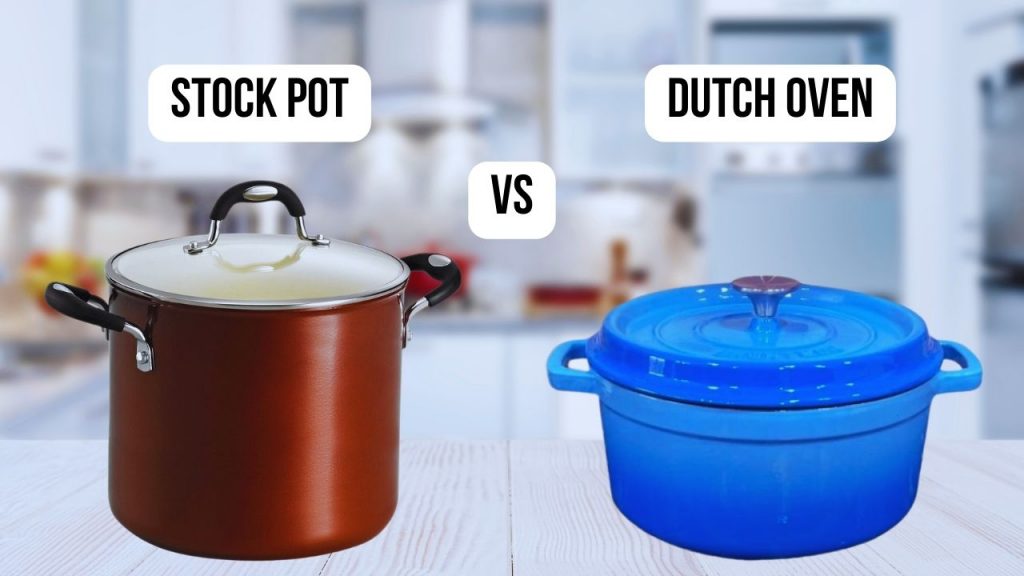
As a restaurant chef with a decade of experience, I can attest to the essential role that both stock pots and Dutch ovens play in a professional kitchen. These two versatile cookware pieces are invaluable for various culinary applications, each with distinct advantages and best uses.
In this post, we will talk about the similarities and differences between stock pots and Dutch ovens.
What is a Stock Pot?
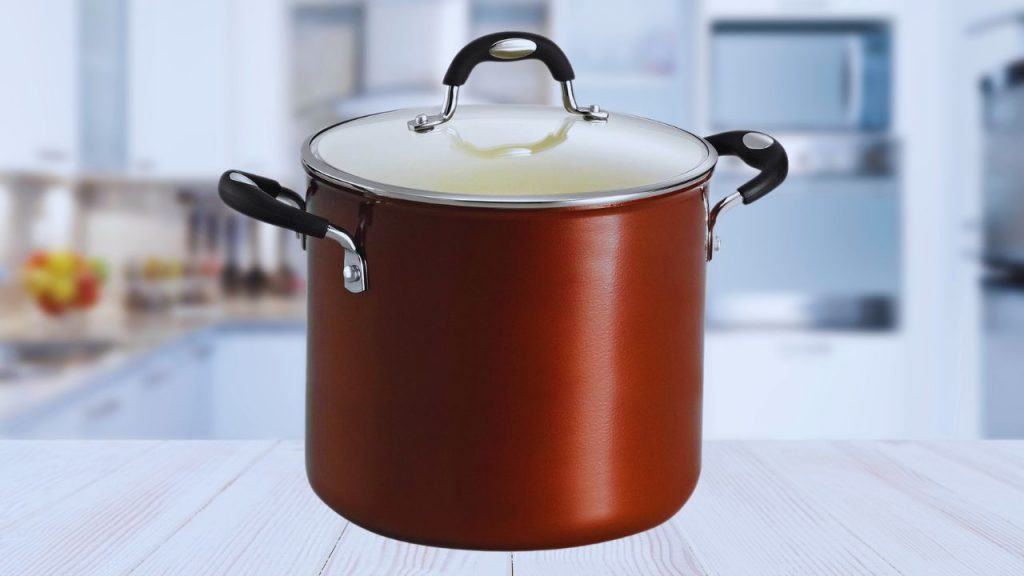
A stock pot is a deep, wide cooking vessel designed to create large batches of liquid-based dishes, such as soups, broths, and stocks. These pots typically have a high capacity, allowing chefs to make substantial quantities of liquid recipes. They come in various sizes, usually ranging from 8 to 20 quarts, making them ideal for restaurant kitchens where producing large volumes of soups or sauces is common. Stock pots are typically constructed from stainless steel or aluminum, which provide even heat distribution and durability.
What is a Dutch Oven?
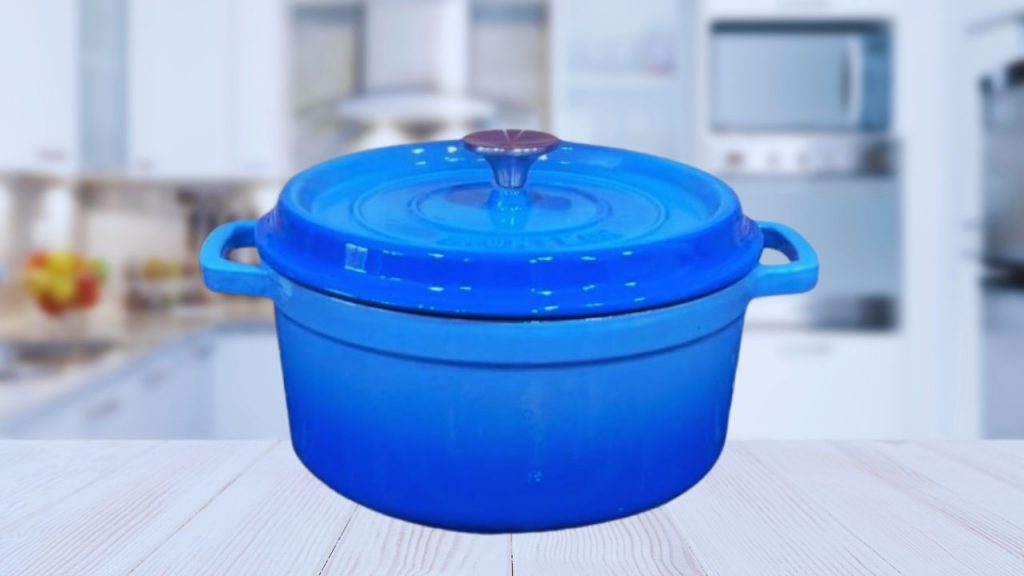
On the other hand, a Dutch oven is a versatile cookware that can be used for various cooking methods. It is a heavy, thick-walled pot with a tight-fitting lid that can be made from cast iron or with an enamel finish.
Dutch ovens can maintain consistent heat, which makes them perfect for slow cooking, braising, roasting, and even baking. Their ability to go from stovetop to oven makes them incredibly versatile and a favorite among professional chefs.
Similarities and Differences Between Stock Pots and Dutch Ovens
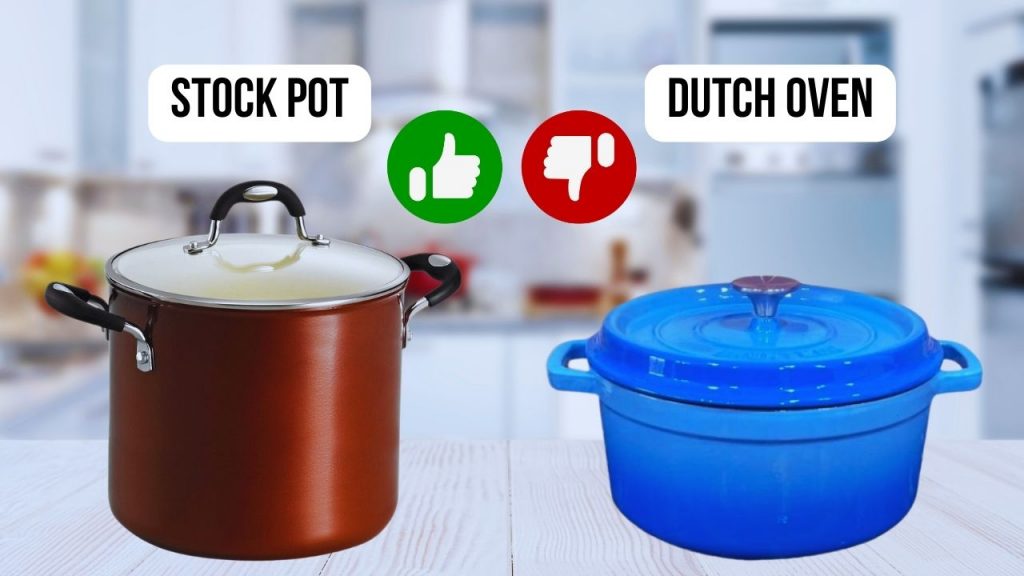
While stock pots and Dutch ovens serve different primary purposes, they share some similarities and differences.
Similarities
- Large Capacity: Both stock pots and Dutch ovens have generous capacities, allowing you to cook substantial food.
- Durability: They have a sturdy build to withstand the rigors of professional kitchen use.
- Heat Distribution: Both distribute heat evenly, but Dutch ovens, especially those made of cast iron, excel in this aspect.
Differences
- Primary Use: Stock pots are primarily designed for liquid-based dishes, while Dutch ovens can be used for a lot of cooking methods, from stovetop searing to slow roasting in the oven.
- Materials: Stock pots are commonly made of stainless steel or aluminum, while Dutch ovens are typically constructed from cast iron or enameled cast iron.
- Lid Design: Dutch ovens come with a tight-fitting lid, essential for moisture retention and slow cooking, while stock pots may have a more traditional lid design without the same sealing capabilities.
Which One Should You Use?
Choosing between a stock pot and a Dutch oven largely depends on your culinary needs.
Stock Pot
Use a stock pot when preparing large volumes of liquid-based dishes like soups, stocks, or broths. It’s also suitable for blanching, boiling pasta, and making sauces. If your restaurant specializes in soups and stocks, a good quality stock pot is a must-have.
Dutch Oven
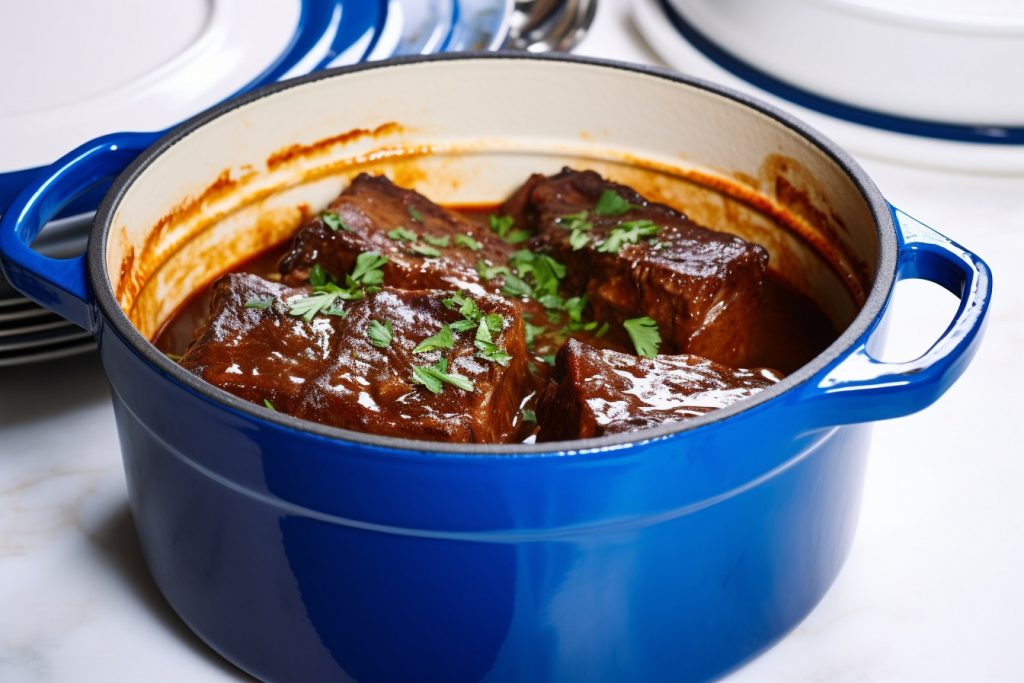
Opt for a Dutch oven when you require a versatile cooking vessel that can handle a variety of cooking methods. From braising short ribs to slow-cooking stews or even baking bread, a Dutch oven can do it all. Its capability to retain heat and evenly distribute it makes it an essential tool in many professional kitchens.
Can You Use Dutch Oven As a Stock Pot
Yes, you can opt to use a Dutch oven as a stock pot in many situations. If you have a Dutch oven and need to make a stock or soup, it can certainly do the job effectively. It offers the advantage of versatility, as you can use it for various other cooking methods.
However, if you regularly make large batches of stocks or soups and want to maximize efficiency, a dedicated stock pot with a taller and narrower shape may be a better choice.
Conclusion
The stock pot and Dutch oven have their unique strengths and applications. A stock pot is ideal for creating large quantities of liquid-based dishes, while a Dutch oven is a versatile workhorse that can handle various cooking techniques.
As a restaurant chef, having both in your kitchen arsenal ensures you’re well-equipped to meet the diverse needs of your menu. So, whether you’re simmering a soup or slow-cooking a succulent roast, these two cookware pieces are essentials in your cooking experience.
Don’t miss out on the compilation of the top-rated Dutch ovens.
